When did northwest Europeans become WEIRD?
Not when they became Christian
The countries in green are more individualistic than the world average. The ones in red are more collectivistic (Beugelsdijk & Welzel, 2018). This difference between northwest Europeans and other humans goes back at least a millennium. Was it due to Western Christianity or does the cause go farther back?
Joseph Henrich has argued that northwest Europeans are less clannish and more individualistic because Western Christianity banned cousin marriage—to a limited degree in the 7th century and then much more in the 9th. Evidence from aDNA, however, suggests they were already avoiding cousin marriage before the ban.
WEIRD is an acronym for Western, Educated, Industrialized, Rich, and Democratic. It refers to people of northwest European descent and was coined to warn against using them in studies to understand human nature in general. They are not necessarily the same as people elsewhere.
Two decades ago, Joseph Henrich and other social scientists concluded that WEIRD people are outliers in many aspects of mind and behavior, including sensory ability, economic preferences, personality structure, morality, and cognition. They are divergent because they have adapted to an atypical environment of weak kinship, strong individualism, and “impersonal pro-sociality”—in other words, social interactions that are less personal, less emotionally intense, and extending much further than friends and family (Henrich, 2024; Schulz et al., 2019).
For at least a thousand years, this behavioral environment has prevailed north and west of a line running from Trieste to St. Petersburg (known as the Hajnal Line). It is characterized by certain longstanding patterns of behavior:
Solitary living for at least part of adulthood, with many individuals remaining single their entire lives.
Departure from the home upon reaching adulthood, either to form a new household or to circulate among unrelated households, typically as servants.
Less loyalty to kin and greater willingness to trust strangers (Schulz et al., 2019; see also Frost, 2017; Frost, 2020; Hajnal, 1965; Hartman, 2004; hbd*chick, 2014; ICA, 2020; MacDonald, 2019; Seccombe, 1992, pp. 94-95, 150-153, 184-190).
Some authors, like Joseph Henrich, see WEIRDness as a legacy of Western Christianity, which arose in Western Europe after the fall of the Roman Empire and the rise of barbarian kingdoms. According to this theory, northwest Europeans became less clannish and more individualistic because the Western Church increasingly restricted cousin marriage:
Roman times: only first-cousin marriages were banned.
Seventh century: the ban was extended two degrees further when the Western Church adopted the anti-incest prohibitions of the Visigothic Code.
Early ninth century: the Western Church began to calculate degrees of kinship through the so-called “Germanic system,” thus doubling the number of forbidden marriage partners (Chandelier, 2021, p. 224; see Note).
The last restriction forced almost everyone to marry outside their local kin group, thus causing clans to disappear and making people more individualistic and less concerned about kinship ties (hbd*chick, 2014; McCann, 2010, pp. 57-58; Schulz et al., 2019).
Other authors, however, have argued that the cousin marriage ban was simply a Christianization of existing norms, specifically Germanic ones (Frost, 2020; Kirkegaard, 2025; MacDonald, 2019; Policy Tensor, 2021). As the Christian faith spread north and west, it absorbed local customs, including those relating to marriage:
During the period preceding the Teutonic invasion, speaking broadly, the church adhered to the Roman law and custom; thereafter those of the Germans, even when the marriage consisted in the formal sale and tradition [i.e., transfer] of the bride, were accepted. (Howard, 1904, p. 291).
Germanic provenance is evident in the bans themselves. The seventh-century ban was taken from the Visigothic Code, and the new kinship calculation method, adopted in the ninth century, was referred to as “Germanic” (Chandelier, 2021, p. 224; Frost, 2020; McCann, 2010, pp. 57-58; see Note).
Moreover, as shown by data from early medieval estates, northwest Europeans were already WEIRD in the ninth century, when the most extreme ban on cousin marriage came into effect. French households were small and nuclear, with 12% to 16% of adults not yet married and adults usually marrying in their mid to late twenties (Hallam, 1985, p. 56). High rates of delayed marriage seem to have long been common among northwest Europeans, as suggested by the writings of Julius Caesar and Tacitus on the Germanic tribes of Antiquity:
Those who have remained chaste for the longest time, receive the greatest commendation among their people: they think that by this the growth is promoted, by this the physical powers are increased and the sinews are strengthened. And to have had knowledge of a woman before the twentieth year they reckon among the most disgraceful acts.
Caesar, De Bello Gallico 6: 21
Late comes love to the young men, and their first manhood is not enfeebled; nor for the girls is there any hot-house forcing; they pass their youth in the same way as the boys.
Tacitus, Germania 20
Evidence from aDNA
For earlier evidence of cousin marriage avoidance, we can look at DNA from remains in ancient cemeteries, specifically the degree of genetic similarity between spouses as measured by runs of homozygosity (ROH).
To date, there have been four such studies from pre-Christian Western Europe. All four show that cousin marriages were already rare.
A study of 57 genomes from the first century BC to the first century AD in southern England
“Y chromosome diversity is high …, and patterns of ROH imply that these were relatively large outbreeding communities.” (Cassidy et al., 2025)
A study of 248 genomes from the third to eighth centuries in southern Germany
“The near absence of long (>12 cM) runs of homozygosity (ROH) and the lack of shared IBD segments (>8 cM) between spouses support strict incest avoidance, excluding relationships closer than the sixth degree.” (Blöcher et al., 2025)
A study of 722 genomes from the seventh to eighth centuries in Austria
“Given that none of the newly reported individuals carry high amounts of runs-of-homozygosity genomic regions—the indication of inbreeding—as estimated by hapROH … , we infer that consanguinity was strictly avoided in both MGS [Mödling site] and LEO [Leobersdorf site] across six generations …. That was mainly achieved by exogamy: 17 of the 19 (90%) mothers buried in Leobersdorf with identifiable offspring have no ancestors buried on site; in the much larger community of Mödling, they are 46 out of 59 (78%). Many daughters seem to have left to be married elsewhere; between ages 7 and 17 years, the sex ratios of the deceased male to female individuals at LEO and MGS are about 1.5:1 and 1.7:1 respectively, and among adults, hardly any female individuals born by parents on site remain.” (Wang et al., 2025)
A study of 424 genomes from the second to mid-ninth centuries in Hungary
“[W]e find no cases of biological consanguinity, based on the absence of long runs of homozygosity (ROH) segments in all analysed individuals …. We do not even detect ROH patterns consistent with more-distant consanguineous unions, such as at the level of second-degree cousins, despite a high occurrence of levirate and multipartner unions. Among Eurasian steppe peoples, intermarriage within the paternal line was permitted only after a certain number of generations, which could range between five and nine. Such rules would explain the absence of even distant biological consanguinity. It is intriguing that the only case we detected of reproductive partners being related was to the sixth degree (which would still be consistent with such rules) and involves the only non-exogamous female individual in RK. This further suggests the uniqueness of this single case.” (Gnecchi-Ruscone et al., 2024)
Discussion
Cousin marriage
The aDNA evidence points to a single conclusion: in pre-Christian times, cousin marriage was already rare in northwest Europe.
But it was also rare farther east. In the Austrian and Hungarian studies, the DNA came not only from indigenous Europeans (probably Slavic peoples) but also from Avars—a Turkic people who entered the Carpathian Basin in the sixth century. Avoidance of cousin marriage may therefore be part of a broader, North Eurasian adaptation.
This point is made, in part, by one of the above studies: “Among Eurasian steppe peoples, intermarriage within the paternal line was permitted only after a certain number of generations, which could range between five and nine. Such rules would explain the absence of even distant biological consanguinity” (Gnecchi-Ruscone et al., 2024).
In fact, cousin marriage may have been rare across all of Eurasia before becoming frequent in those regions where it is now common, i.e., the Middle East, North Africa, and Central/South Asia. This is the conclusion of two other studies, one of 411 genomes over the past 15,000 years and another of 1,785 genomes over the past 45,000 years (Ceballos et al., 2021; Ringbauer et al., 2021). Neither study, however, is sufficiently powered to tell us exactly when, where, or how cousin marriage became more frequent. Perhaps it began among the elites of early Middle Eastern civilizations and was later emulated by everyone else with the spread of Islam.
In addition, neither study distinguishes between avoidance of first-cousin marriage and avoidance of all cousin marriages up to the sixth degree. The latter may have reached higher levels within a smaller zone of Eurasia.
WEIRD morality
If avoidance of cousin marriage was not specific to northwest Europeans, we should seek the origins of WEIRDness in other mental and behavioral aspects, particularly those that have left traces in aDNA.
One such aspect is the moral system. Northwest Europeans are inclined toward a more universal and absolute conception of morality, which in turn is linked to certain heritable traits.
In this moral system:
Rules are framed in universal and absolute terms, as opposed to the situational and relativistic framing of kinship.
Help is willingly given to non-kin, as long as they belong to the same community of rule followers.
Continual rule breaking leads to expulsion from the community. The line between insiders and outsiders is much more a line between the morally worthy and the morally worthless. Xenophobia is a moral judgment, rather than a simple rejection of the “Other.”
This system has favored—and been favored by—an increased capacity for affective empathy and guilt proneness:
Affective empathy is extended from the mother-child relationship to all social relationships. Through this involuntary transfer of another person’s feelings to oneself, rule breaking is experienced emotionally as harm not only to others but also to oneself.
Rule breaking is punished much more by guilt than by shame. A rule breaker feels guilty even when no one else has witnessed the rule breaking. In contrast, shame is felt only when there are witnesses. Everyone thus accumulates a burden of guilt, which can be reduced only through forgiveness, penance, confession, absolution, etc. (Benedict, 1946; Frost, 2017; Frost, 2020).
Like avoidance of cousin marriage, this moral system likely preceded the Christianization of northwest Europeans. In fact, the latter may have transformed the former, creating a branch of the Christian faith that is not only more fearful of cousin marriage but also more preoccupied with guilt, particularly the inevitability of guilt and the continual need to reduce one’s burden of guilt. This may be why the doctrine of original sin is more important in Western Christianity than in Eastern Christianity, and more important in Protestantism than in Catholicism.
To track how guilt proneness and affective empathy have evolved in northwest Europeans, we should look for indications in aDNA. For instance, changes to the mean population level of affective empathy could be tracked by examining the alleles associated with this trait, which is 52-57% heritable (Frost, 2020). These alleles have already been identified and used to calculate polygenic scores (Wendt et al., 2022). The same approach might show us how guilt proneness has varied over space and time.
Note
In the Roman Empire, marriage between close relatives was forbidden up to the third degree, that is, marriage was prohibited between brothers and sisters, parents and children, and between uncles and nieces or aunts and nephews, as well as between ascendants and descendants without limit of degree.
Beginning in the 8th century, the Church began to impose a broader restriction and forbade unions up to the seventh degree, while changing the calculation method to impose the tradition of Germanic origin whereby the degree no longer means the number of relatives between two individuals, but the number of generations before reaching a common ancestor. Thus, two first cousins are kin in the fourth degree under the Roman system, but only in the second degree under the Germanic system: their common ancestor is their grandfather or their grandmother.
The seventh-degree prohibition promoted by the Church therefore corresponds to the fourteenth degree under the old system. This considerably broadened the scope of prohibited unions. It was enough to have in common a great-great-great-great-great-great grandparent for a marriage not to be permitted (my translation) (Chandelier, 2021, p. 224).
Postscript: Discussion on X
After this article was published in Aporia Magazine on June 26, 2025, Joseph Henrich posted a reply on X, which I reproduce below. It seems to be a generic reply to critics of his work, rather than a specific reply to me. In reality, I don’t deny that a relationship of causality exists between WEIRDness and Western Christianity. Nor do I try “to clump Europeans together psychologically.”
I disagree with him only on the direction of the causality. Western Christianity didn’t create WEIRDness. Rather, the latter transformed the former by making the Western branch of Christianity more focused on the individual, more ideological, and more preoccupied with guilt as a means of behavioral control.
Joseph Henrich argues for the reverse: over time, the Western Church made northwest Europeans more and more WEIRD. As proof, he cites the correlation between WEIRDness and the time depth of Western Christianity in various regions. But this correlation is due largely to the expansion of Western European states into regions south and east of the Hajnal Line (notably southern Spain and southern Italy). As these states expanded, they imposed Western Christianity on populations that had previously practiced Islam or Eastern Christianity. So the correlation with time depth is really a correlation with the geopolitical expansion of Western Europe—an expansion that would eventually encompass the entire world.
I would also like to know about the aDNA evidence he mentions with regard to polygyny. The aDNA evidence I’ve seen indicates that Europe had a low polygyny rate even in pre-Christian times.
Joseph Henrich’s comments
Peter misses the argument here, making the entire piece misleading. Once you understand the actual argument, the aDNA data is largely supportive.
The argument is that ONE branch of Christianity (not "Christianity") diffused a set of prescriptions and prohibitions that dissolved the pre-Christian kinship structures into monogamous nuclear families. It's NOT about "cousin marriage" per se.
These norms enforced monogamous marriage (ending common polygyny, concubinage, sex slaves) and tabooed levirate marriage along many types of unions, which included genetic cousins as well as spiritual kin (e.g., goddaughter) and all in-laws. Lots of non-close-genetic relatives.
The norms also altered post-marital residence and inheritance (by testament instead of customary). This is elaborated in great detail in my book.
These changes dramatically reduced what anthropologists call "kinship intensity", which captures the broad and tight social networks formed by kinship norms. (economists renamed these "kinship tightness"). The classic corporate "tight" kin group is the clan.
The aDNA strongly supports this view by confirming the prevalence of polygynous patrilineal clans (without marrying women) in pre-Christian Europe. There's even evidence for levirate marriage, which is the first thing the Church banned in Late Antiquity.
So, even if we take the claims about cousin marriage at face value (which I don't), the aDNA still supports a decline in kinship intensity... which is the key issue. The clans were dismantled.
In his effort to clump Europeans together psychologically, he ignores the application of this theory to explain the variation among Europeans today. E.g., knowing how long a population was under the medieval Church predicts their individualism, conformity & imp. Prosociality
The Church's exposure predicts psychological variation in Europe.
It also works globally
However, if Peter's reading of the aDNA is right, why does Church exposure predict rates of European cousin in the 20th century?
Curiously, after banning cousin marriage, the medieval Church realized that Europeans wanted to marry their kin so much, they monetized by selling dispensations...made big bucks. There was demand... why? Suddenly, people want to marry cousins?
Why does knowing the rates of cousin marriage among Italian provinces tell us so much about psychological variation within Italy?
References
Benedict, R. (1946 [2005]). The Chrysanthemum and the Sword. Patterns of Japanese Culture. First Mariner Books.
Beugelsdijk, S., & Welzel, C. (2018). Dimensions and dynamics of national culture: Synthesizing Hofstede with Inglehart. Journal of Cross-Cultural Psychology, 49(10), 1469-1505. https://doi.org/10.1177/0022022118798505
Blöcher, J., Vallini, L., Velte, M., Eckel, R., Guyon, L., Winkelbach, L., … Burger, J. (2025). Historic Genomes Uncover Demographic Shifts and Kinship Structures in Post-Roman Central Europe. bioRxiv 2025.03.01.640862; https://doi.org/10.1101/2025.03.01.640862
Caesar, J. (1915). De Bello Gallico & Other Commentaries of Caius Julius Caesar (Translated by W.A. Macdevitt). London: J.M. Dent.
Cassidy, L. M., Russell, M., Smith, M., Delbarre, G., Cheetham, P., Manley, H., ... & Bradley, D. G. (2025). Continental influx and pervasive matrilocality in Iron Age Britain. Nature, 637(8048), 1136. https://doi.org/10.1038/s41586-024-08409-6
Ceballos, F. C., Gürün, K., Altinişik, N. E., Gemici, H. C., Karamurat, C., Koptekin, D., ... & Somel, M. (2021). Human inbreeding has decreased in time through the Holocene. Current Biology, 31(17), 3925-3934. https://doi.org/10.1016/j.cub.2021.06.027
Chandelier, J. (2021). L’Occident médiéval. D’Alaric à Léonard. 400-1450. Mondes anciens, Paris: Belin. https://www.belin-editeur.com/loccident-medieval
Frost, P. (2017). The Hajnal line and gene-culture coevolution in northwest Europe. Advances in Anthropology, 7, 154-174. https://doi.org/10.4236/aa.2017.73011
Frost, P. (2020). The large society problem in Northwest Europe and East Asia. Advances in Anthropology, 10(3), 214-134. https://doi.org/10.4236/aa.2020.103012
Frost, P. (2024). How Christianity rebooted cognitive evolution. Peter Frost’s Newsletter, November 13.
Gnecchi-Ruscone, G. A., Rácz, Z., Samu, L., Szeniczey, T., Faragó, N., Knipper, C., ... & Hofmanová, Z. (2024). Network of large pedigrees reveals social practices of Avar communities. Nature, 629(8011), 376-383. https://doi.org/10.1038/s41586-024-07312-4
Hajnal, J. (1965). European marriage pattern in perspective. In: D.V. Glass and D.E.C. Eversley (eds). Population in History. Essays in Historical Demography. London, Arnold.
Hallam, H.E. (1985). Age at First Marriage and Age at Death in the Lincolnshire Fenland, 1252-1478. Population Studies, 39, 55-69. https://doi.org/10.1080/0032472031000141276
Hartman, M.S. (2004). The Household and the Making of History. A Subversive View of the Western Past. Cambridge, Cambridge University Press. https://doi.org/10.1017/CBO9780511818134
hbd*chick (2014). Big summary post on the Hajnal Line. October 3. https://hbdchick.wordpress.com/2014/03/10/big-summary-post-on-the-hajnal-line/
Henrich, J. (2024). WEIRD. Open Encyclopedia of Cognitive Science. https://doi.org/10.21428/e2759450.8e9a83b0
Howard, G.E. (1904). A History of Matrimonial Institutions, Volume 1. Chicago: The University of Chicago Press.
ICA (2020). Research Themes—Marriage Patterns. Institutions for Collective Action. https://web.archive.org/web/20190329070516/http://www.collective-action.info/_THE_MarriagePatterns_EMP
Kirkegaard, E. (2025). Why did NW Europeans become WEIRD? Just Emil Kirkegaard Things, January 29.
MacDonald, K. (2019). Individualism and the Western Liberal Tradition: Evolutionary Origins, History, and Prospects for the Future. Amazon. https://www.amazon.ca/Individualism-Western-Liberal-Tradition-Evolutionary/dp/1089691483
McCann, C.A. (2010). Transgressing the Boundaries of Holiness: Sexual Deviance in the Early Medieval Penitential Handbooks of Ireland, England and France 500-1000. Theses, South Orange, NJ: Seton Hall University. https://scholarship.shu.edu/theses/76
Policy Tensor. (2021). The Church’s crusade against cousin-marriage did not create the Western nuclear family. May 7
Ringbauer, H., Novembre, J., & Steinrücken, M. (2021). Parental relatedness through time revealed by runs of homozygosity in ancient DNA. Nature Communications, 12, 5425. https://doi.org/10.1038/s41467-021-25289-w
Schulz, J.F., Bahrami-Rad, D., Beauchamp, J.P., & Henrich, J. (2019). The Church, intensive kinship, and global psychological variation. Science, 366(707), 1-12. https://doi.org/10.1126/science.aau5141
Seccombe, W. (1992). A Millennium of Family Change. Feudalism to Capitalism in Northwestern Europe. London: Verso. https://archive.org/details/millenniumoffami0000secc/page/n3/mode/2up
Tacitus (1970). Agricola, Germania, Dialogus. Loeb Classical Library (Translated by M. Hutton & W. Peterson). Cambridge, MA: Harvard University Press.
Wang, K., Tobias, B., Pany-Kucera, D., Berner, M., Eggers, S., Gnecchi-Ruscone, G. A., ... & Hofmanová, Z. (2025). Ancient DNA reveals reproductive barrier despite shared Avar-period culture. Nature, 1-8. https://doi.org/10.1038/s41586-024-08418-5
Wendt, F. R., Warrier, V., Pathak, G. A., Koenen, K. C., Stein, M. B., Krystal, J. H., ... & Polimanti, R. (2022). Polygenic scores for empathy associate with posttraumatic stress severity in response to certain traumatic events. Neurobiology of Stress, 17, 100439. https://doi.org/10.1016/j.ynstr.2022.100439


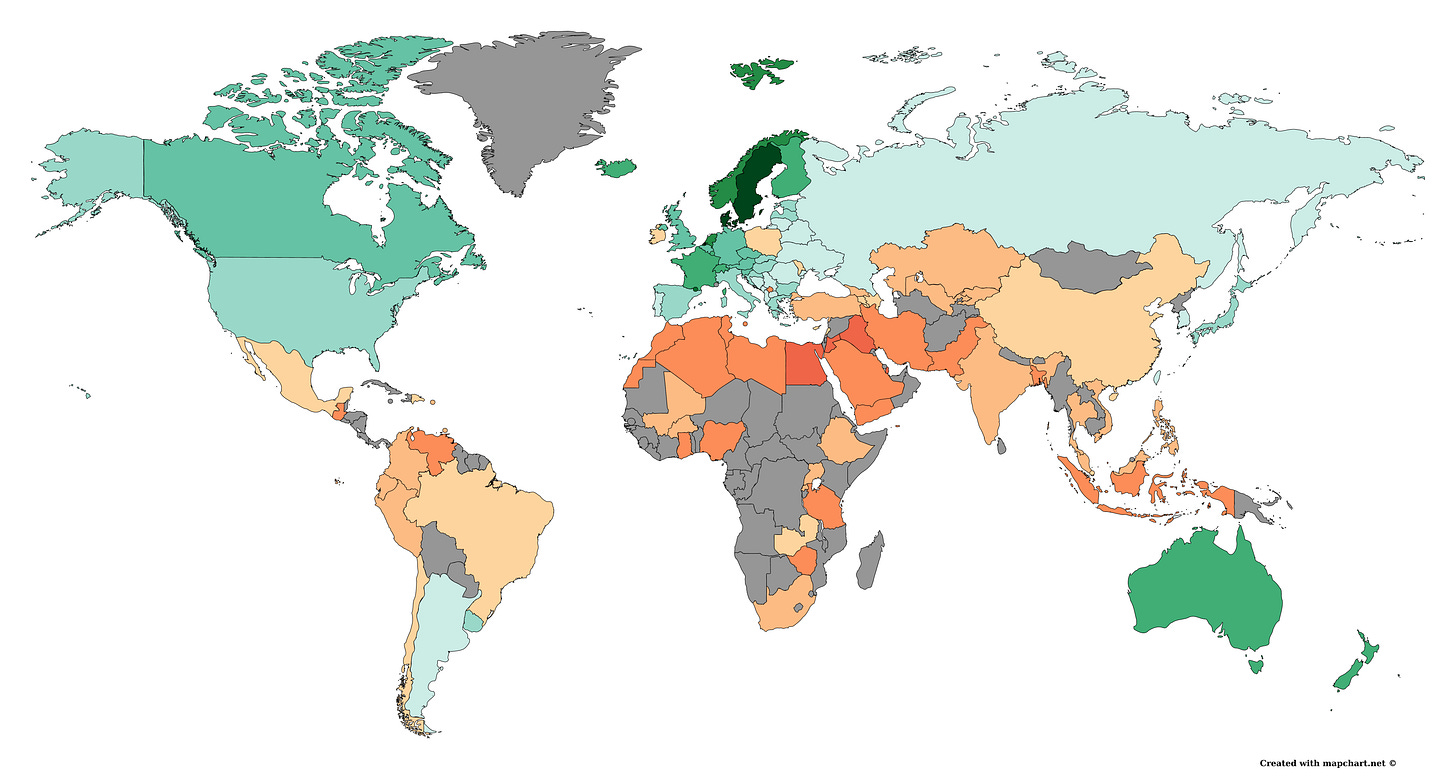
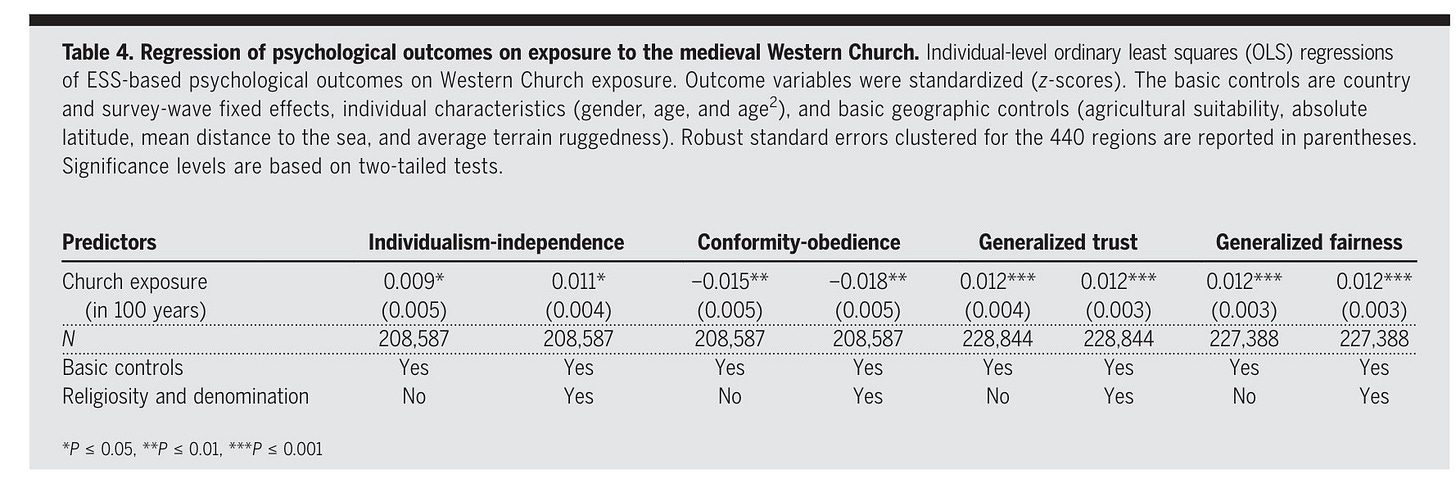
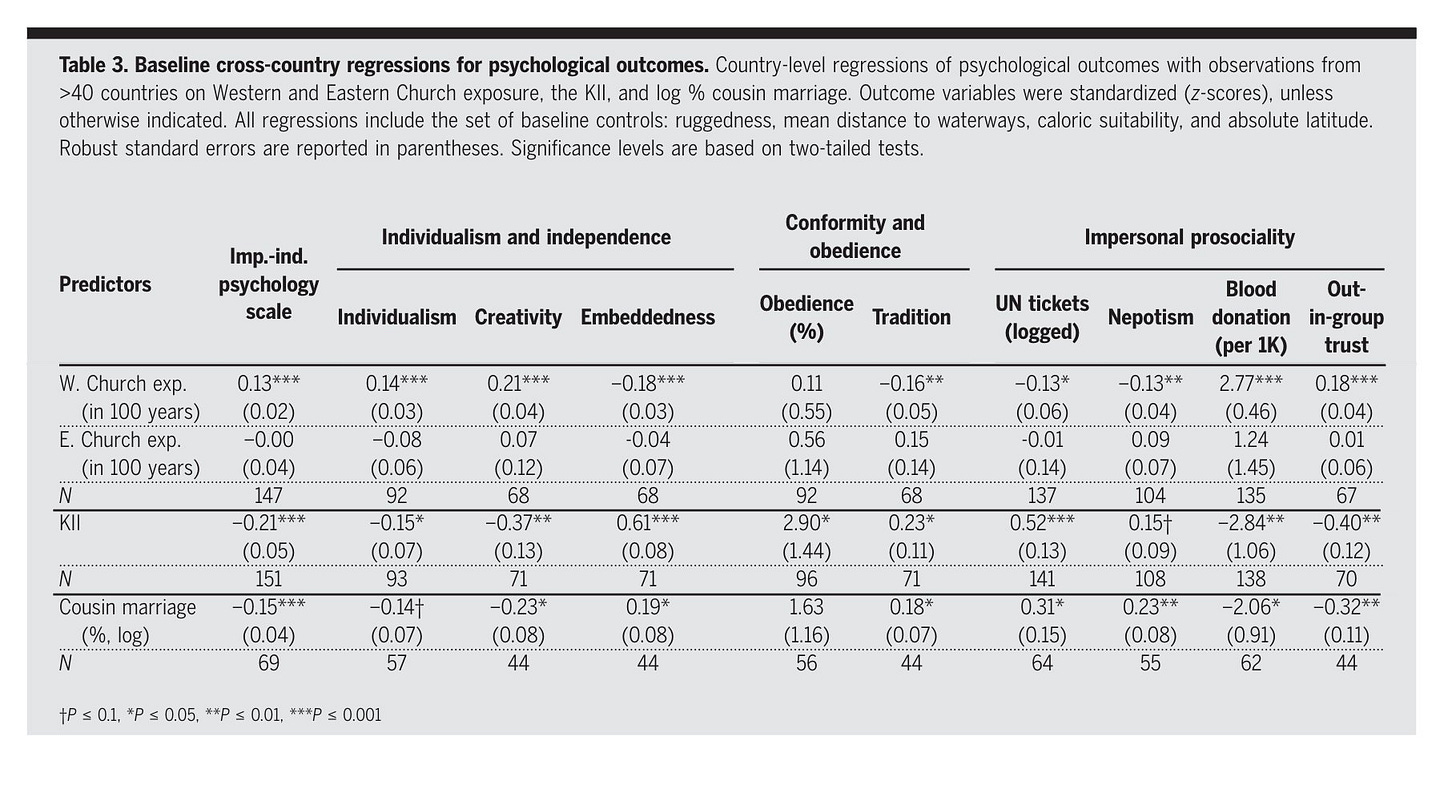
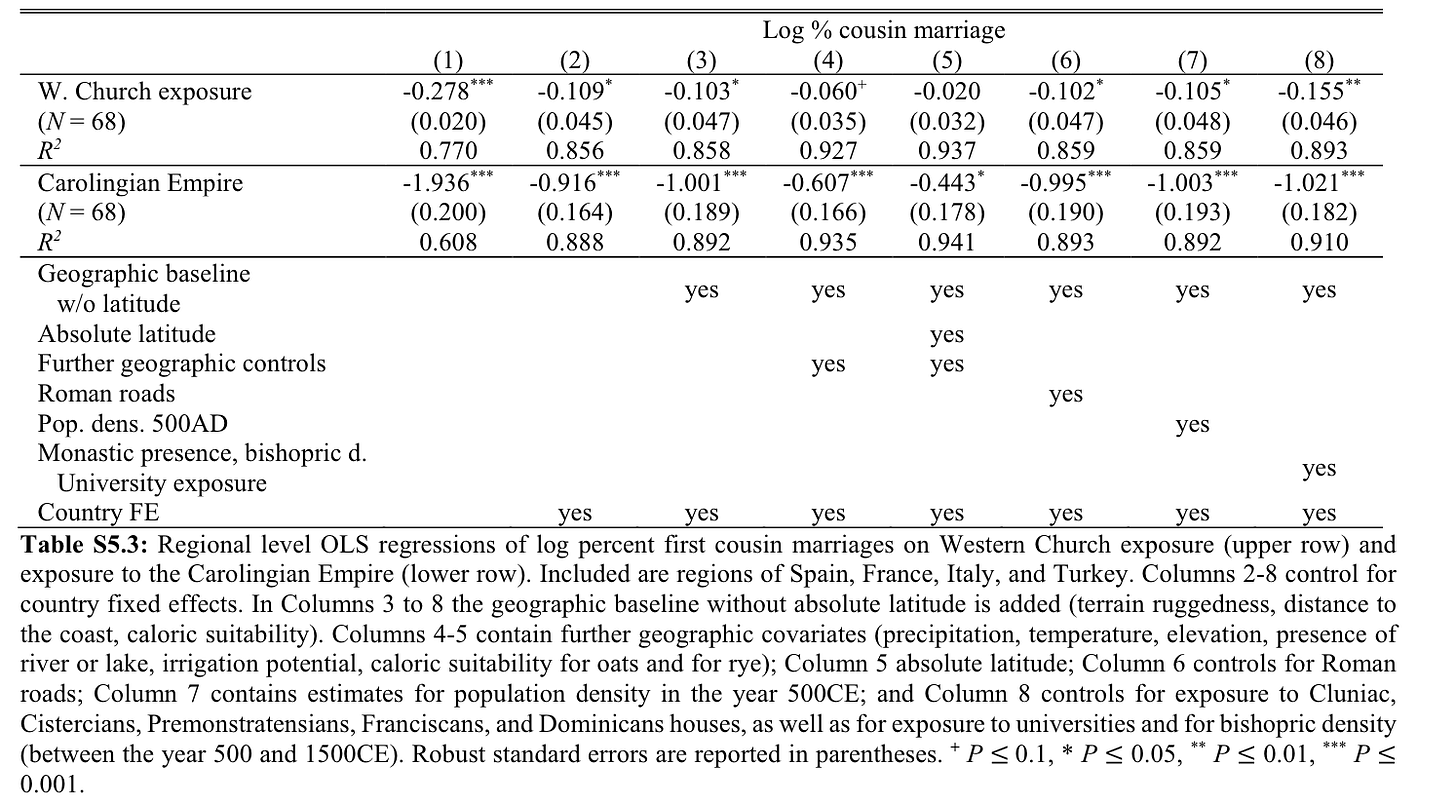
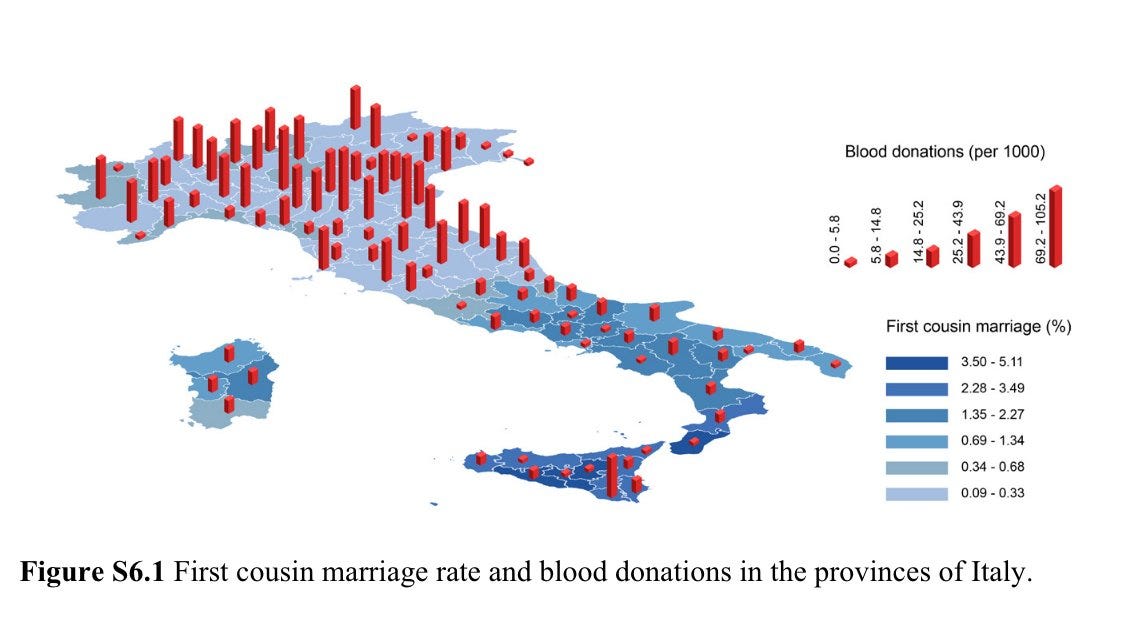
Interesting essay! Early Americans, and subsequent immigrant groups in the 19th century who arrived in America from western Europe brought with them lived traditions of lower “d” democracy that long predated mass voting systems, communal decision making bodies, rotating magistracies, guild self-governance, peasant assemblies, and village councils. Western Europe, especially northwest of the Hajnal Line, had long-standing local democratic institutions, such as England’s Borough Corporations, which let communities to elect their own officials, manage markets, and control local law enforcement and taxation, sometimes centuries before universal suffrage. These structures taught that democracy is fundamentally about distributed authority, self-rule, civic participation, and local discretion, not just a periodic vote. Those structures, which were deeply integrated with decision making in the major societal spheres, were economically, scientifically, and governmentally beneficial, an those processes of those democratic governance structures themselves, through participation in them, intellectually/cognitively improved people and communities
Current day Western countries have maintained the vote but dismantled the institutional structures that made real democracy possible, its like systems that retains the symbols of democracy but are almost void of its substance. And this isnt actually necessary, despite what we've been told America had very robust structures in these regards until WW2, it was literally technically-mechanically a democracy, and even after that it took decades for them to fade, the world is not so much more complex than it was in the 1930s, if anything, the mass rollout of computers and telecommunications technology has made things overall simpler. And we were better run when we were a democracy
"Northwest Europeans are inclined toward a more universal and absolute conception of morality."
See Fig 5 in "Ideological differences in the expanse of the moral circle", Adam Waytz, Ravi Iyer, Liane Young, Jonathan Haidt & Jesse Graham, Nature Communications 2019 https://www.nature.com/articles/s41467-019-12227-0. The right graph depicts the outer moral circles of liberals extending far beyond those of conservatives. The above principle regarding Northwest Europeans seems to be continued or extended in liberals, at least within the (study 3a) survey of 131 U.S. residents.
Conservative moral circles were much more likely than those of liberals to extend only as far as circles 4 and 5 of the following 16:
(1) all of your immediate family,
(2) all of your extended family,
(3) all of your closest friends,
(4) all of your friends (including distant ones),
(5) all of your acquaintances,
(6) all people you have ever met,
(7) all people in your country,
(8) all people on your continent,
(9) all people on all continents,
(10) all mammals,
(11) all amphibians, reptiles, mammals, fish, and birds,
(12) all animals on earth including paramecia and amoebae,
(13) all animals in the universe, including alien lifeforms,
(14) all living things in the universe including plants and trees,
(15) all natural things in the universe including inert entities such as rocks,
(16) all things in existence
Liberals' moral focus extended much further (or at least this is what the answered, who knows how they actually behave?) as far as 14 to 15. Also, the intensity of liberal moral focus was somehow measured as 20 while that of the conservatives was weaker: 12.
Fig 3, from a different study, illustrates the same pattern - liberals tend to abhor parochialism and nationalism, instead focusing on all humanity, possibly with distrust or hatred of their own culture.
With the capture of universities by liberals since the 1970s - and now the mainstream media and many governments - this moral reach extremism shifts most of the focus away from family and the people who share the person's country of residence and seeks to care about all living things, not only on Earth. Performative exposition of this moral extremism is greatly facilitated by social media, with its highly effective policing among friendship and workplace / professional groups, disadvantaging (including cancelling) those who challenge this extremism or fail to chant its dictates as is required of members of the liberal tribe.
"Increased capacity for affective empathy and guilt proneness". "Continual need to reduce one’s burden of guilt."
Wokeness spreads via social media, mainstream media and universities: Person is made to feel guilty for being white, wealthy, non-disabled, non-gay/lesbian/trans etc. etc., Christian (not an adherent of a non-Western religion etc. and is offered a path to relieving this guilt. (In Christianity the guilt is relieved by God, who the person must first have complete faith in.)
The path involves righting the wrongs of the world. In wokism, this is the only thing that matters. It is more important than truth. Whatever seems to fight perceived oppression must be true. The world is composed of oppressors, victims and victims' allies - the latter who my find themselves with the identities of the oppressor classes, but who admit their guilt and try to make amends.
Rather than volunteer for missionary or aid work in third world countries, and rather than donating a crippling proportion of one's income to those who suffer at the hands of the patriarchy, capitalism, colonialism etc. a popular approach to lightening one's burden of guilt is to make the world a better place by the socially visible method of blasting stuff out on social media (usually by copying someone else's material - the real go-getters make up their own for extra Brownie points) which makes those who should feel guilty, actually feel guilty. That is a good day's work and the blaster goes to sleep feeling less guilty.
So the woke mind virus spreads - some kind of guilt pyramid selling or chain letter cult arrangement. https://quillette.com/2025/05/26/plotting-lives-of-quiet-contentment-victimhood-modern-fiction/ mentions ". . . the intense, sentimental, and paternalistic desire to empathise with the imagined suffering of unknown victims." Note the value attached to casting one's moral net greater and greater distances.
"This impulse seems to dominate much of today’s literary fiction. Ideology has seized the gatekeepers of serious literature -writing instructors, editors, publishers, and writers themselves - and whole swathes of the human experience are being neglected as a result."
Liberals laud empathy - but only for those who they regard as victims. They have less of it for their conservative opponents than conservatives have for them: https://journals.sagepub.com/doi/10.1177/01461672231198001.
Women and girls tend to have a greater proclivity for excessive guilt and focus on perpetrators vs. victims, not least because they are physically and economically vulnerable, and despite the efforts of men who love and protect them, are still all too frequently harmed and killed by other men.
To cut across three millennia in a few sentences: Successful, stable, productive, internally harmonious and at a country level robust societies developed by authorities culling violent men and breaking up clannishness by way of discouraging cousin marriage, which also improved genetic outcomes and fostered hybrid vigour from wider and presumably better choices of mates. Christianity, with its inbuilt guilt (born in sin) and its socially positive focus on generosity and forgiveness, continued the trend and resulted in the formation of higher trust societies in which complex innovation and commerce flourished.
Now, the same socially and likely genetically driven proclivities for guilt and expanding the love and care of the moral circle wider and wider has led the liberal part of Western societies to cause, or at least tolerate and celebrate, mass immigration of people who have nothing genetically or socially in common with Western societies and who to a very significant degree are at odds with Western civilisation. This is now to the point where the social cohesion which enabled Western WEIRD societies to flourish, is being destroyed, probably forever, within a generation.
Sydney Harbour Bridge marchers were not only trying to defend the Palestinians from genocide, but some were apparently calling for the dissolution of Australia. I recently saw a video of a 20-something woman in the USA, who I guess identifies as indigenous, calling for the destruction of the USA, or beyond that Canada, since she refers to the continent derisively as "Turtle Island". Sorry, I can't find it in my bookmarks now.